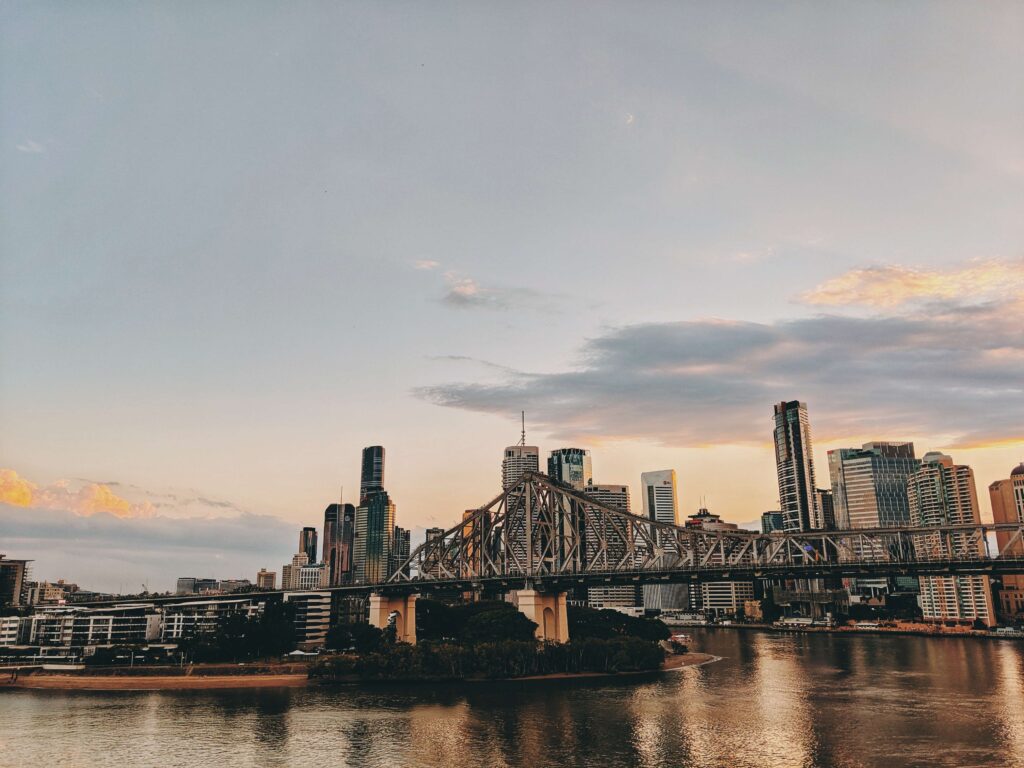Brisbane Weather – Warm and Sunny All Year Round

Brisbane‘s subtropical climate offers warm and sunny conditions throughout the year, but sudden storms can occur suddenly during summer and the cyclone season.
From June to August, temperatures are ideal for outdoor activities and avoid the crowds that summer brings.
Table of Contents
Winter
Brisbane winters are milder and drier than elsewhere in Australia, making them the ideal time for visitors who don’t prefer extreme heat. From November to March temperatures average between 59-77degF with much reduced humidity levels compared with other cities like Sydney.
At this time of year, many popular festivals take place and the city becomes filled with the color lilac as jacaranda trees bloom throughout its center. Additionally, this period provides the best opportunity to witness humpback whale migration off the coast.
Summer in Australia can be scorching hot, yet high season due to school holiday travel is at a premium, meaning accommodations and flights remain in high demand. Temperatures remain hot and humid but sudden storms provide welcome respite from the heat and humidity for travellers. February is typically the wettest month; climate in Brisbane tends to be moderated by ocean breezes with less intense humidity levels compared with other states of Australia.
Spring
Brisbane can become oppressively hot and humid from December to February, but that doesn’t have to be seen as a negative thing: now is an excellent time for swimming at its beaches or exploring air conditioned museums and galleries in the Cultural Precinct. At this time of year you’ll also witness stunning jacaranda trees in full bloom that transform streets and parks into vibrant lilac paradise.
At the end of spring (September to November), humidity begins to fade, and temperatures increase from 59-77 degrees Fahrenheit, creating the ideal conditions for exploring Botanic Gardens, kayaking on Brisbane River or sightseeing at South Bank Parklands. Nature enthusiasts may want to join a whale-watching tour between June and October to view majestic humpback whales as they migrate between Antarctica and their Arctic breeding grounds – or attend festivals such as Anywhere Festival and Brisbane Writers’ Festival during this time period!
Summer
From December to March, summer temperatures reach 40 degrees Celsius with humidity making the heatwaves feel oppressive and thunderstorms occurring regularly.
Spring and fall shoulder seasons are generally enjoyable, with temperatures remaining comfortable and humidity gradually declining. Festival-rich October is especially enjoyable, when jacaranda trees bloom into full lilac bloom and visitors can stroll the city streets and parks smothered in color.
The rainiest period typically spans from October 21 to May 29, with over 24% of days experiencing some form of precipitation. Winter (July to September) and early spring (April through June) typically remain the driest months, although rainstorms often arrive by July/August (June-September). At times during this season it can also become windy; be prepared with sturdy walking shoes, warm jacket or sweater and insect repellent/sunhat. Tropical cyclones may affect Brisbane directly but usually pass north of its limits before making their mark.
Autumn
Brisbane lies on Australia’s eastern coast and is therefore mostly protected from colder southern cities; however, rain and wind still pose problems, as can rainstorms with short heatwaves or tropical cyclones passing further north than Brisbane itself.
Autumn (March to May) is an ideal time for travel as the temperatures and humidity remain relatively comfortable while crowds have diminished significantly. Additionally, evening strolls along riverbanks or an al fresco dinner experience make these months ideal.
Springtime (September to November) offers pleasant yet warmer temperatures, with sea breezes relieving any humidity while jacaranda trees bloom, turning the city lilac-colored in particular in City Botanic Gardens and New Farm Park. Night temperatures can dip slightly; festival season also makes this period very vibrant in Brisbane.

